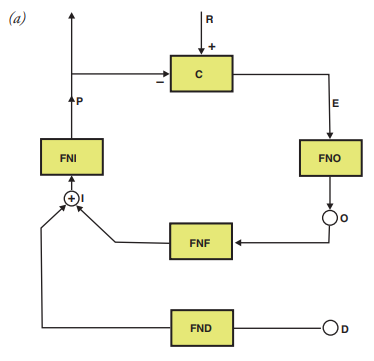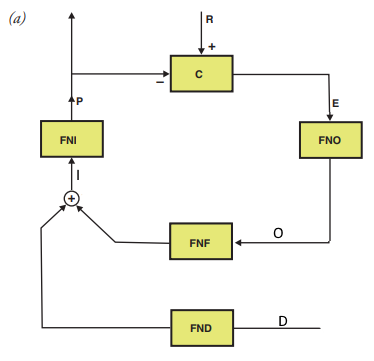Here is another one, from Bill’s Byte articles from 1979. This one has an adder explicitly marked with a plus sign! But the I (input quantity) is next to it, not next to the line where it should be. And the circles for d and o are still here. Original and fixed:
 Fix:
Fix: 